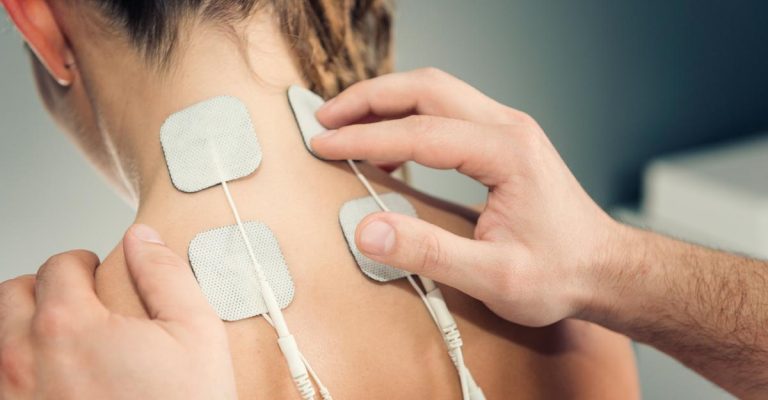
Have you ever felt a numbness in your body after suffering a head injury? This sensation can be bothersome, as it may or may not indicate the presence of an underlying medical condition. While numbness is often associated with nerve damage, other causes must be considered for adequate diagnosis and management of symptoms. This blog post explores some common causes of numbness following head injury and discusses possible treatments.
Numbness refers to a loss or reduction in sensation or feeling in a specific area of the body. It is often described as a tingling, “pins and needles” sensation, or a lack of sensation altogether. Numbness can occur due to various factors, including nerve damage, compression or irritation of nerves, circulatory problems, or certain medical conditions.
Numbness is commonly associated with peripheral neuropathy, a condition characterized by damage to the peripheral nerves that transmit signals between the central nervous system (brain and spinal cord) and the rest of the body. This can result from underlying causes such as diabetes, vitamin deficiencies, traumatic injuries, infections, autoimmune diseases, and certain medications.
Following a head injury, numbness can occur due to several possible root causes. Here are a few potential reasons:

Head injuries can cause damage to the nerves in the affected area. Numbness may occur if the trauma directly affects or compresses the nerves responsible for sensation. The severity and location of the head injury will determine which nerves are affected.
If the trigeminal nerve, which carries feeling from the face to the brain, is injured, for instance, the brain may not get accurate information regarding facial sensation, resulting in numbness. Other groups of nerves in the neck might be damaged if the victim is experiencing trauma at the point of their accident.
A concussion is a mild traumatic brain injury that can result from a blow to the head. While numbness is not a common concussion symptom, it is sometimes possible. Numbness may occur as a result of the impact on the brain and its effects on nerve function.
In more severe head injuries, such as a moderate or severe TBI, numbness can occur due to damage to the brain structures responsible for sensory processing. The brain controls and interprets sensation; any disruption to these areas can lead to numbness or altered sensation in various body parts.
The thalamus is the second most crucial brain region for processing sensory information. Once the nerves detect sensation, it is sent to the thalamus, which relays the data to the somatosensory cortex in the brain. Numbness may result from the brain’s inability to process sensation appropriately after injury to the thalamus or somatosensory cortex.
In some cases, a head injury can be accompanied by damage to the spinal cord, particularly if the trauma extends to the neck or upper back region. Spinal cord injury can result in numbness or loss of sensation in the areas innervated by the affected spinal segments.
Head injuries can also cause blood flow disruptions to some brain regions. Reduced blood supply can lead to ischemia, where the affected region does not receive adequate oxygen and nutrients. This can result in numbness or tingling sensations in the corresponding body areas controlled by the affected brain regions.
Impairment to the somatosensory cortex or other nerve damage is two potential causes of numbness following a head injury. In order to get effective therapy, it is crucial to identify the underlying reason and learn as much as possible about the presenting symptoms.
Damage to the nerves in the brain may cause a variety of symptoms.
Spotting nerve damage signs and other diagnostic procedures may help physicians zero in on the underlying cause of tingling or numbness. Methods such as magnetic resonance imaging (MRI) and computed tomography (CT) may be used to visually pinpoint regions of the cerebral cortex that could have been damaged.
A nerve conduction velocity test is another method doctors employ to gauge electrical activity, especially in the periphery. If you’ve suffered a head injury and are experiencing tingling or numbness, this test might help pinpoint the source. Numbness might result from a neck injury, so clinicians may do specialized examinations.
Once a diagnosis has been made, therapy may begin. Multiple approaches may be used to treat numbness based on its source and extent. For instance, sensory reeducation may be an effective therapy for numbness brought on by brain injury.
Acupuncture and electrical stimulation are two alternative treatments that have shown promise in cases of numbness resulting from nerve injury. You must talk to a medical professional if you want the best therapy for your disease.
Some of the best ways to deal with post-head-injury numbness include:

Numbness following a head injury may sometimes be alleviated with electrical stimulation (e-stim). E-stim, also known as electrical stimulation (ES), is a typical treatment in which electrodes adhere to the skin and electrical impulses are sent to the affected muscles.
After a traumatic brain injury, e-stim may promote neuroplasticity and aid in the recovery of muscular action. Although electrical stimulation may be done without the help of a practitioner, training with one is necessary before doing it on your own.
They may instruct you on properly using your e-stim device, including how to set its settings and where to position its electrodes to ensure your safety. It’s crucial to use care while using electrical stimulation to alleviate numbness from a head injury, though it may be effective.
Some risk of skin irritation or burns exists due to the inability to correctly perceive the strength of the electrical impulses by those with sensory loss. People with sensory loss should monitor their skin often throughout e-stim therapy to ensure no adverse reactions.
Sensory reeducation is a rehabilitation technique to help individuals regain or improve their sensory perception and function after nerve injury or damage. It can be valuable for addressing numbness and altered sensation following a head injury.
Here’s how sensory reeducation works and what it involves:
Assessment: The first step in sensory reeducation is a thorough assessment by a trained healthcare professional, such as a physical or occupational therapist. They will evaluate the extent of the sensory loss, the specific areas affected, and the individual’s functional limitations.
Sensory Stimulation: Sensory reeducation involves providing targeted and controlled sensory stimulation to the affected areas. This stimulation can take various forms, such as touch, vibration, temperature changes, or pressure. The goal is to reawaken the nerve pathways and promote sensory recovery.
Desensitization: In cases where the individual experiences hypersensitivity or discomfort in response to certain stimuli, desensitization techniques may be used. This involves gradual exposure to these stimuli to help the nervous system adapt and reduce sensitivity over time.
Discrimination Training: Discrimination training aims to help individuals differentiate between different types of sensory input, such as textures, shapes, and temperatures. This can be important for improving the functional use of the affected body part.
Mirror Therapy: Mirror therapy is a technique that can be used when one side of the body is affected by numbness, and the other side is unaffected. Using a mirror to reflect the unaffected side creates the illusion that the affected side is also moving and experiencing sensory input. This can help stimulate the brain’s perception of sensation and promote neural reorganization.
Acupuncture is a traditional Chinese medicine practice that involves the insertion of thin needles into specific points on the body. While acupuncture has been used for various conditions, including pain management and neurological disorders, its effectiveness in treating numbness following a head injury is not well-established.
Research on the use of acupuncture for post-head injury symptoms is limited, and there is currently insufficient evidence to support its effectiveness in treating numbness resulting from a head injury. Most studies on acupuncture for neurological conditions focus on conditions like stroke, peripheral neuropathy, and nerve-related pain rather than explicitly addressing numbness following a head injury.
That being said, acupuncture may benefit general symptom management and overall well-being in individuals with head injuries. It is generally considered safe when performed by a qualified and licensed acupuncturist. Acupuncture sessions can promote relaxation and relieve associated symptoms such as headaches, anxiety, stress, or muscle tension.
There are a number of potential causes for numbness after a head injury, including brain or nerve damage. Sensitivity loss and other symptoms are common results of this. Reducing numbness and restoring feeling after a TBI is possible, thanks to the availability of efficient treatment approaches.
Sensory retraining, electrical stimulation, acupuncture, and other complementary approaches may all be used in treatment. A therapist is a good resource for finding out which treatments are effective as well as safe.